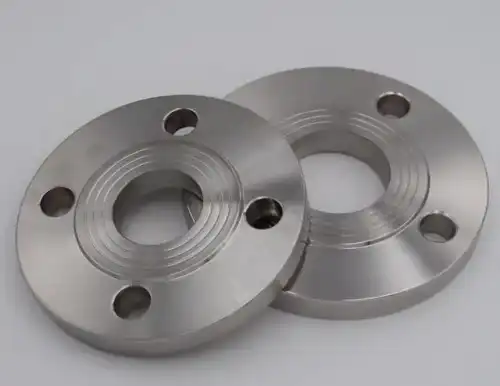What is a welding flange?
A welding flange is a part that connects pipes and is connected to the pipe ends. There are holes in the welding flange, and bolts make the two flanges tightly connected. Gaskets are used to seal between them. Welding flanges are a disc-shaped part that is most common in pipeline engineering.

What is the difference between welding flanges and other types of flanges?
Compared with other types of pipeline connections such as threads, flange pipe joints, and clamps, They have the following differences:
1. First, the connection of it is relatively firm and not prone to leakage;
2. Secondly, the connection is more sealed and will not loosen or leak;
3. The service life of it is longer;
4. The use range of welding flanges is wider and can be used under high pressure, high temperature, and highly corrosive conditions.
What are the different types of flanges?
1. Classification by structural form
According to different structural forms, flanges can be divided into flat welding flanges, butt welding flanges, threaded flanges, socket flanges, blind flanges, etc.
A Flat welding flange: also known as a lap flange, is a relatively simple flange, which is mainly composed of two steel plates welded together, usually used for the connection of low-pressure pipelines.
Butt welding flange: this is a relatively common flange, which is composed of two butt-welded steel plates or forgings, usually used for the connection of medium and high-pressure pipelines.
Threaded flange: a flange that connects the thread to the pipeline, mainly composed of nuts and bolts, and is usually used to connect high-temperature and high-pressure pipelines.
Socket flange: this is a connection method in which the pipeline is inserted into the flange, which is mainly composed of a circular steel plate with holes and two semicircular bolts, usually used for the connection of plastic pipes.
Blind flange: a flange without holes, which is usually used for pipeline connections that need to be sealed.
2. Classification by material
Depending on the material, flanges can be divided into carbon steel flanges, stainless steel flanges, alloy steel flanges, copper flanges, plastic flanges, etc.
Carbon steel flange: is a flange made of carbon steel material, which is usually used for general industrial pipeline connections.
Stainless steel flange: a flange made of stainless steel material, which is usually used for the connection of corrosive medium pipelines.
Alloy steel flange: a flange made of alloy steel material, which is usually used for the connection of high-temperature and high-pressure pipelines.
Copper flange: a flange made of copper material, which is usually used for the connection of water supply pipelines.
Plastic flange: a flange made of plastic material, which is usually used for the connection of plastic pipes.
In conclusion
In practical applications, They are widely used in the fields of petroleum, natural gas, chemical industry, etc., with stable performance and reliable effect. At the same time, It also has good economy and practicality and is considered by industry insiders to be a very excellent connection method. Welding flanges are a very practical connection method, which can bring great convenience to our life and work.











